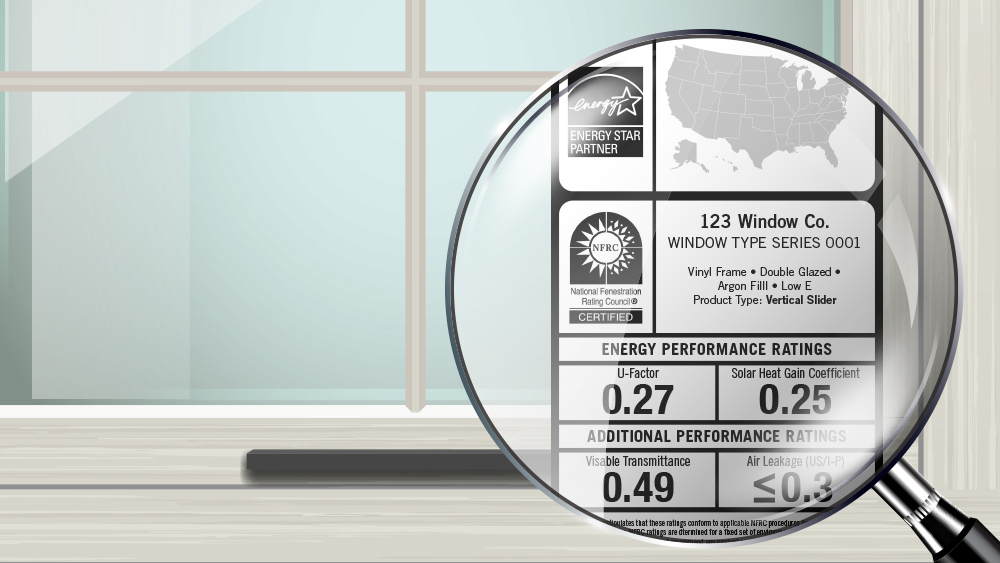Ever wonder what all those window energy rating labels mean? When searching for energy efficient windows, understanding what they mean will make selecting the perfect window a lot easier. This blog will explain the meaning of these labels and ratings.

Window Ratings
Window ratings are used to determine the efficiency of different types of windows. Being able to read them will allow you to understand what they are capable of. The following measurements are better if the rating is lower:
- U-Value / U-Factor: U-Value, also known as U-Factor, measures the rate of heat transfer. It basically tells you how much gained/lost heat you get from your window. The range for this measurement is .25 – 1.25. Windows with lower numbers are more energy efficient than windows with higher numbers. If you have windows that get a lot of direct sunlight, then it would be better to find windows with lower u values.
- SHGC: The Solar Heat Gain Coefficient measures the amount of heat and solar radiation your windows bring inside the home. Lower numbers mean less radiation. The measurement of this ranges from 0 – 1. For homes that get a lot of sunlight, look for windows with lower SHGC measurements.
- Visible Transmittance: Visible transmittance measures the amount of light that is able to pass through a window. The scale ranges from 0 – 1. The higher the number, the more light will be allowed in. Depending on what your needs are, you can choose windows with lower or higher visible transmittance. For example, if you want more natural light to enter your home, select a window with higher visible transmittance. If you want to keep your house cool during hot days, then select a window with lower visible transmittance.
- Air Leakage: Air leakage measures the amount of air that can pass through a window. The lower the number, the more airtight the window. Air leakage ranges from 0.1 – 0.3. For homes in windy places, a window with lower air leakage would be better.
The following measurements are better if the number is higher:
- DP: Design Pressure measures the amount of pressure a window can take before breaking. The ratings vary from DP 30 – DP 50. The higher the rating, the better. It means that it can handle more pressure. For people that live in places prone to storms, a higher DP rating would be beneficial.
- Condensation Resistance: Condensation Resistance measures how much moisture is able to build up on the surface of a window. The ratings vary from 1 – 100. The higher the number, the more resistant the window is to moisture. Someone that lives in a rainy area would search for a window with a higher condensation resistance rating.
Now that you know what these window energy rating labels mean, now you will be able to select the right windows for your home that maximizes efficiency, comfort, and safety. We hope this blog gave you a better understanding of window efficiency labels. For all your window replacement needs, contact us at Windowfits.
